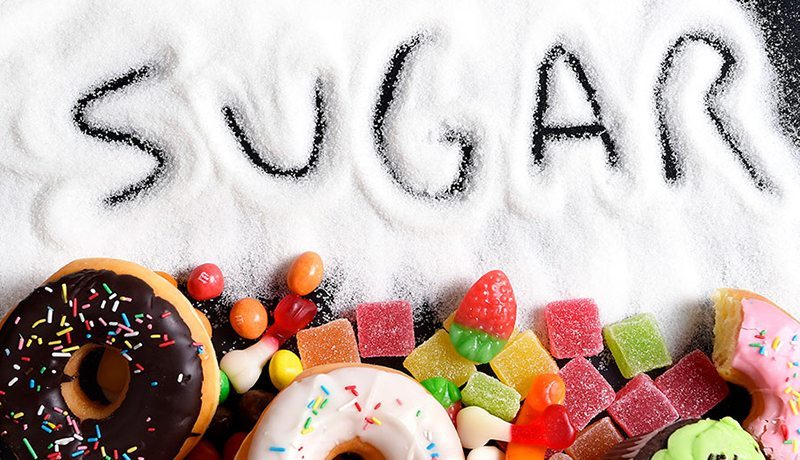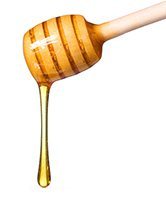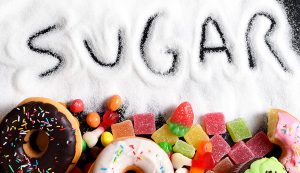Sugar, Hormones & Menopause Signs & Symptoms | The Sugar Series Part 1 of 3

Sugar, Hormones & Weight Gain
When it comes to your weight and your hormones sugar is not–so–sweet.
Dealing with midlife weight gain takes many forms. Indeed, it’s something most of us battle with (find out the reasons why here).
As you may have read I’m a fan of Intermittent Fasting but it’s not for everyone. And another habit that works for me is minimising sugar. Especially the refined variety and embracing a more holistic way of eating.
What’s more, this is great not only for managing your weight but also balancing your mood swings!
The truth is sugar makes you fat and it’s linked to many diseases such as Type 2 diabetes, cancer, and heart disease.
Look out for part two in The Sugar Series for 10 ways eliminating sugar can improve your life.
And the other thing sugar does is play havoc with your hormones.
In addition, it triggers hot flushes and mood swings along with insulin resistance which leads to abdominal weight gain.
How blood sugar fluctuations work:
 So let’s say you have a glass of orange juice.
So let’s say you have a glass of orange juice.
Well, your blood sugar levels zoom up – often called a spike – and the body releases an insulin response which causes the blood sugar to drop down again.
Further, you might have, let’s say, a sausage with tomato sauce and the sugar in the sauce causes your blood sugar to spike again triggering another insulin response.
Do you see how it works?
Every time you eat your blood sugar goes up but when it’s driven by sugar it can stay up.
And this stresses your body out causing it to release adrenalin/cortisol because the tension makes it think you’re in danger. (Which you are, but not from a wild beast).
As a result, you can say hello to bad temper, fatigue and hyperactivity.
You can actually see this happen in children after some lollies!
Backed by science and life
This information is backed by science. And it’s backed by life – mine. Indeed, I proved it just the other day.
You see, I’ve been eating ‘clean’ for several months and decided to have a little break over Easter.
So to indulge I had a bar of chocolate. (I believe in the 90/10 rule and in freedom. ☺ You have to live.)
But gosh! I have to tell you I felt terrible afterwards.
Further, I now know what they mean by sugar hangover.
It is literally like that. A hangover.
And as I’d completely removed the sugar I used to have on a reasonably regular basis (it’s in sauces, pasta, cereals, bread and all sorts of things) my body had healed.
So it definitely didn’t want the sugar anymore, and it let me know! I became tired, headache-y and I had a stomach upset.
What my body wanted – and I could feel the triumphant cravings ☺ – was green vegetables and whole foods over-refined. True story.

In fact, back in caveman times sugar was very rare and we had to run through a few hoops (i.e. walk for miles and up hills and down valleys) to get to it.
Therefore, it was OK for us to gorge on it. Think sweet berries and the like. This feasting didn’t happen often and we physically worked it off. Moreover, it was a natural sugar.
However, these days we only have to drive to the store and purchase the refined stuff. So not much effort is required. And then we eat, and eat, and eat.
And physiologically sugar does not trigger our leptin hormone, the hormone which tells us we’re full. So we can (and do) eat a truckload of it without feeling full.
 While many health aficionados recommend using honey, agave and maple syrup as substitutes, they’re still sugar. Although they are a better choice nutritionally they have a high caloric value.
While many health aficionados recommend using honey, agave and maple syrup as substitutes, they’re still sugar. Although they are a better choice nutritionally they have a high caloric value.
And the sugar conversation is not just about the sugar you spoon into your cuppa or sprinkle over your porridge it’s the ‘hidden’ sugars in things like sauces, dressings, fruit juice and yoghurt.
Where sugar lies hiding to set off insulin (the fat storage hormone)
- Low-fat yoghurt
- Health bars
- Sweet chilli sauce
- Sauces: tomato, barbecue etc.
- Dressings
- Soups
- Health drinks
- Flavoured waters
- Fruit juice and fruit drinks
- Cereals
- Chutneys
- Baked beans
- Sparkling wine
Nutritional nugget
Did you know?
We’re eating about 35 teaspoons of sugar every single day yet the recommended ‘dosage’ is six teaspoons for a woman, nine for a man and three for children!
How do you know how much sugar you’re eating?
Look for the grams under total sugars and divide it by 4 to get the amount of teaspoons in the product.
Some different names of sugar
- Glucose
- Fructose
- Corn syrup
- Malt syrup
- Dextrose
- Steer clear of low-cal substitutes like erythritol and aspartame
Menopause note:
If you’ve got menopause signs like sleep difficulties, stress and mood swings and you’re eating sugar it’s likely that your sugar cravings will increase.
Too much sugar can create a biochemical dependency in the brain.
What’s more, it’s why chocolate is the most common menopausal craving!
How to cut down on sugar
1. Know your (ingredient) labels
A good rule of thumb is to read the ingredient label. And if sugar is listed in the first three ingredients put it back where you found it!
Also, divide the grams under total sugars and divide it by 4 to get the amount of teaspoons in the product.

2. Go naturally sweet
Going cold turkey isn’t a good idea but think about swapping man-made sugar bombs for low fructose fruits like berries, rockmelon and kiwifruit. Stevia and rice syrup are also OK sugar substitutes.
3. Conquer the craving
While feeling stressed or irritated might see you reaching for the chocolate bar (we get it!) – choose wisely. Dark chocolates OK so something like Green & Blacks 85% organic chocolate is a good choice.
But limit yourself to two squares at a time.
And guess what? You’ve just turned your treat into a health food.
Or ask someone for a hug or phone a friend for a chat. You just might be emotionally hungry.
Conclusion
And if you’d like to know more you can rent That Sugar Film here. It’s brilliant.
Jennifer is a certified integrative health and menopause coach with a speciality in 40+ women, peri/menopause and hormone balance for weight loss. If you have questions email her here.










